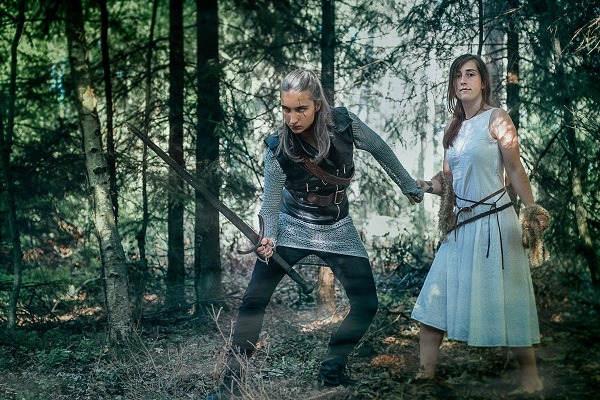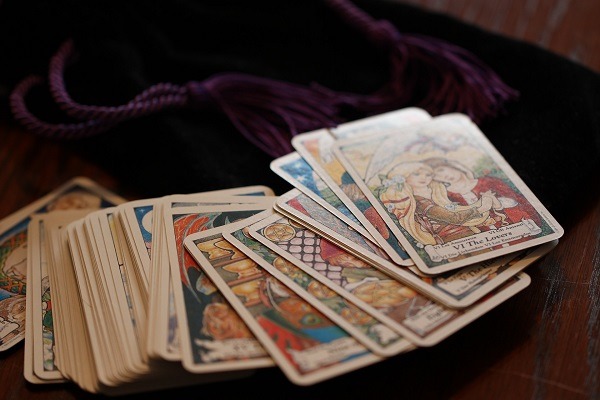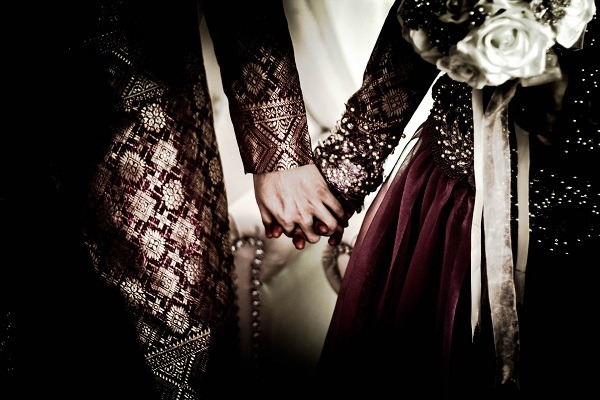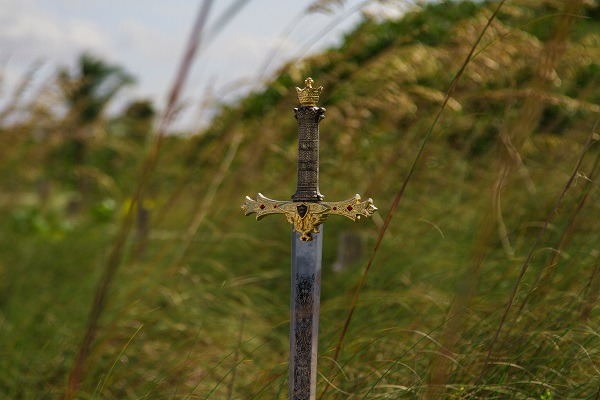Fantasy fiction demands certain essential elements to fit into the genre and reach the right audience. But in seeking out those essential elements, you might fall prey to some dreaded fantasy clichés.
Like any genre of fiction, fantasy is susceptible to a wide range of clichés. Unfortunately, it can be all too easy to fall into the trap of using repetitive, unoriginal tropes and traditions.

While you may be able to get away with tired tropes in certain circumstances, the fact of the matter is that fantasy readers are a die-hard, dedicated, well-read bunch.
The majority of fantasy fans have read widely within the genre, meaning that they’ve practically seen it all when it comes to typical fantasy standbys.
Most of the time, if a fantasy reader picks up a novel that adds nothing new to the already well-established genre, they’ll do one of three things: drop it immediately, forget about it entirely, or review it poorly – none of which are good outcomes for authors trying to find an audience.
So how can you ensure you’re creating the most engaging, original fantasy fiction possible?
Let’s take a look at five of the most common clichés of the genre, how to avoid them, and how to engage fantasy readers who have seen it all.

Cliché #1: Stereotypical characters
Plot and setting are important, but characters are the true heart of any good story. This is no different when it comes to fantasy. Unfortunately, character development is an area where a lot of fantasy writers tend to succumb to clichés and stereotypes.
When we talk about stereotypical characters in fantasy, we’re referring to archetypes of the genre – that is, predictable, recurrent character types and traits.
Finding these kinds of characters in multiple fantasy books is like seeing the exact same cast of characters playing the same roles in slightly different plays or stages. (In other words… pretty boring!)
Here are a few examples of stereotypical character types that have been overdone in fantasy:
- The ‘chosen one’ – a main character who is prophesied or destined to fulfil some great purpose.
- The wise old mentor (often a wizard) who trains and encourages the hero.
- The feisty, weapon-wielding heroine whose prowess is a constant surprise to the men she encounters.
- The lowly servant or farm boy/girl who rises above their circumstances to achieve great power and status.
- The orphan whose long-lost parents were actually royalty, making him or her secretly heir to the throne.
- Magical (and often homogeneous) races/species such as elves, dwarves, orcs and faeries.

Now, we’re not saying that you have to avoid any character that sounds remotely like the ones described above. If you find yourself starting to sway into stereotypical territory, you don’t necessarily need to scrap or change characters entirely.
Instead, stop and think about what makes them truly unique, original, interesting and vital to the story. What makes them a character only you can write?
Tip: Another thing to avoid when writing fantasy is creating perfect, ‘Mary Sue’-style characters.
For reasons we’ll discuss below (see cliché #2), fantasy has a tendency to lend itself dangerously well to perfectly flawless and noble characters, who are a stereotype in themselves.
Your story takes place in a fantastical world, but that’s no excuse for lazily drawn, unrealistic characters!
After all, it’s the relatable human qualities in your characters that will endear them to readers and draw people into your world. So be sure to point out your characters’ flaws as well as their good points.

Cliché #2: Oversimplified ‘good vs. evil’ dynamic
‘The world doesn’t exist in black and white.’ You’ve no doubt heard this saying before – and you’d do well to keep it in mind whenever you’re writing fantasy.
A common mistake made by many fantasy writers is viewing their world and characters in clear-cut black and white, rather than blurry shades of grey.
Because so much traditional fantasy deals with the conflict between good and evil, both readers and writers have often fallen into the trap of seeing heroes as purely good and ‘bad guys’ as purely evil.
To reiterate something we mentioned above: the fact that you’re writing fantasy, not realistic fiction, does not mean your characters don’t have to be realistic. And to truly be believable characters, they must not be oversimplified. To quote one of our favourite fantasy writers:
The world isn’t split into good people and Death Eaters. We’ve all got both light and dark inside us.” – J. K. Rowling

Readers may have expected clear-cut morals from characters in the fairy tales of their childhoods, but as teenagers and adults reading fantasy, they expect more.
Gone are the days of evil villains with no motive but power; gone are the good, charming heroes with no major flaws. Gone are the straightforward battles in which the powers of good triumph over the forces of evil.
Again, we’re not saying you can’t examine the good vs. evil dynamic in your fantasy writing. We’re saying that, in order to avoid the potential clichés that come with such a universal concept, you should pay attention to both sides of the story.
You should bring to light the areas of moral ambiguity and greyness that exist in every conflict (and indeed in every person).
To do this, you must explore the flaws of your protagonists – characters you might be tempted to portray as purely ‘good’. You must also attempt to see things from the perspective of your antagonists. After all:
Nobody is a villain in their own story. We’re all the heroes of our own stories.” – George R. R. Martin

Cliché #3: Setting – medieval, European-style monarchy
Setting in fantasy – otherwise known as world-building – can be as prone to clichés as fantasy characters.
One particularly widespread tendency is for fantasy writers to set their stories within the same kind of world: a medieval European-style society, usually governed by a monarchy.
Following in the footsteps of fantasy giants like Tolkien and Martin, this kind of setting has become something of a convention in modern-day fantasy fiction.
A medieval European flavour permeates a large portion of the genre; everything from social organisation to architecture, weapons and clothing is often based off roughly the same period in real-world history.
Classing this particular element as a cliché presents its own problems, though. While it is undoubtedly a widely used convention of the fantasy novel, there’s a reason this kind of setting shows up again and again.
Not only does it lend itself well to the magic and mystery so inherent in the genre, it can also provide readers with a sense of comfort and security. Like visiting an old friend, fantasy fans will often feel immediately at home slipping into a story that’s told in this familiar setting.

With this in mind, we concede that a medieval, monarchical setting is perhaps one of the more forgivable fantasy clichés – but only if the story told within that setting is original, fresh and engaging.
By all means incorporate kings, queens, peasants, swords and castles into your fantasy, but don’t rely on them to draw your readers in. Again, they’ve seen all those things before.
What they want to see now is a brand-new story that simply uses these familiar aspects rather than revolving around them.
If you want to avoid the potential cliché factor altogether, perhaps consider inventing a truly unique setting. It’s an enormous task, but the payoff for creating an entirely new world will be well worth it.
Study examples of different cultures from around the world if you need inspiration, and feel free to let your imagination run wild. Freed from the constraints of a ‘typical’ fantasy society, your story has potential for true originality – something that will make readers really sit up and take note.

Cliché #4: Contrived romance, including ‘instalove’ and love triangles
Ahh, the old fairy tale favourite: love at first sight… And that all-too-familiar romance standby, the love triangle.
You may think these have no place in a list of fantasy clichés, but in fact, these elements are particularly relevant to the Young Adult fantasy category – one that dominates the fantasy market and grows larger every day.
The majority of YA fantasy (and a great deal of adult fantasy, too) involves at least one element of romance in its plot.
This makes sense, especially in YA; for its teen protagonists, the discovery and exploration of love is an important part of their young lives, as it is for any real-life teenager (or reader).
If you’re writing YA fantasy, you may feel you have to include a romantic element to appeal to your potential audience. But romance must be treated with as much caution in this genre as it would be in any other.
If a love story plays no real part in your actual story, and is only included for the sake of including romance, it will appear contrived and unrealistic. Your readers won’t respond to it in the same way they would a genuine romance that occurs through careful character development.

As we mentioned above, two common romantic clichés are ‘instalove’ and the love triangle.
‘Instalove’ refers to a common misstep in the development of a romance, in which two characters fall in love after very little interaction and relationship development.
In a bid to keep your plot moving and your readers engaged, it can be tempting to push fast-forward on a romantic connection so you can get to the good stuff! But be warned – this could have a negative effect on your readers.
Instead of experiencing the satisfaction of two characters getting together after a period of development and tension, readers will be left disbelieving, in doubt of the authenticity of the relationship.
To avoid this particular cliché, first consider whether these two characters really need to get together in the first place.
If the answer is yes, ensure you allow their relationship to progress naturally, with plenty of ups and downs – not in a straightforward way that feels rushed or forced.
Love triangles have also become quite a predictable element in YA fantasy. A protagonist (usually female) will find herself torn between two potential love interests, who tend to be polar opposites in character.
The to-and-fro between the three characters becomes a plot point in itself – and if you aren’t careful, it can detract from the real story you’re trying to tell.
If you’re considering introducing a love triangle into your story, again you must ask yourself whether it really needs to happen to contribute meaningfully to character development and plot. If so, perhaps consider exploring it from a different angle.
For example, instead of being at the centre of two people’s interests, your character may develop an interest in another character at the same time somebody else does.
While still fulfilling the tension-creating dynamics of a love triangle, this avoids the overused representation of a heroine (or hero) forced to choose between two love interests.

Cliché #5: The all-powerful magical object
You know the drill: the protagonist is on a quest to find the Very Important Magical Object before the antagonist does. This object has the power to save or destroy the world depending on who wields it.
Powerful magical objects have a rich history in fantasy fiction. From Excalibur to the One Ring to the Elder Wand, fantasy literature is rife with humble artefacts that bear great power.
While these kinds of objects provide a great magical plot point and help drive the story along, the truth is that by now they’re nothing new.
To avoid the cliché of yet another all-powerful magical object, ensure that the personal motivations behind your characters’ actions, quests and journeys are the main focus of the narrative.
This way, even if a magical object is included as an important element in your story, it will be secondary to what really engages readers: the characters.
Furthermore, if you choose to include a key magical artefact, try to ensure it isn’t one of the most typical kinds – a sword, an amulet, a ring, a jewel, etc. Unfortunately, these types of objects scream ‘cliché’.
You’d be better off creating or utilising an entirely original item, and exercising your creativity to imagine the scope of its potential power.

***
So there you have it: five clichés to be wary of when writing fantasy fiction. (If you’re keen on more fantasy-focused articles, don’t miss our roundup of the benefits of writing a fantasy series and our ultimate guide to fantasy subgenres!)
As we mentioned above, this list of clichés isn’t intended as a strict instruction to ‘avoid all of these elements’. Some of the elements we discussed still have great potential to be utilised and explored in fresh, unique ways.
But at the same time, if any of the above sounds familiar when it comes to your story, it might be worth checking back to ensure you’ve approached these potential clichés in an engaging, original way.
Before you go back and check your story, have a bit of fun by taking The Fantasy Novelist’s Exam over at Rinkworks. You’ll get a laugh out of their light-hearted take on fantasy clichés, and might even learn another thing or two along the way!
7 responses to “5 Clichés To Avoid In Your Fantasy Novel”
Thank You Claire! This has really been helpful. I am working on a fantasy and it’s been a shock that I’d so comfortably surrounded my plot with all these cliches’. It’s a bitter truth, yet an excellent eye-opener. I’m looking forward to making some changes and developing a better strategy on how to present my fantasy. It’s so insightful. I now see why some fantasies are bangas are some are nowhere in comparison.
Thankyou!
This was really helpful! Thanks very much for writing this article. 🙂
Hi Saloni,
You’re most welcome – glad to hear you found the tips helpful!
Happy writing 🙂
-Claire
Thanks a lot!
By the way I am not actually writing a novel but writing a script to a game, and it’s actually a science fantasy game taking place in a modern present-day city. Also, I managed to remove trope no. 2 by actually making the antagonist actually kind to other people but evil to the protagonist, because the protagonist is disrespectful to the antagonist since childhood.
Now I will not spoil everything… but you really motivated me to keep writing. Best wishes and good luck! Are you writing anything now by the way?
Hi Perry,
Sounds like a fascinating project! Game scripts need much of the same story arcs, character development etc. that novels do, so I’m glad you found this piece helpful. By the sounds of your game, you might also be interested in our piece on urban fantasy: https://writersedit.com/fiction-writing/5-simple-tips-for-writing-awesome-urban-fantasy/
Thanks for your comment and all the best with your script writing! P.S. As for my own writing – I have a couple of long-neglected fantasy projects that I’d love to get back to soon, so hopefully will be able to!
Best of luck 🙂
Claire
Hello! Could I please have the date that this article was published! Wanting to refer to it for my masters thesis. Thanks!
Hi Taylor,
This article was published on July 20th, 2016. Best of luck with your masters! 🙂